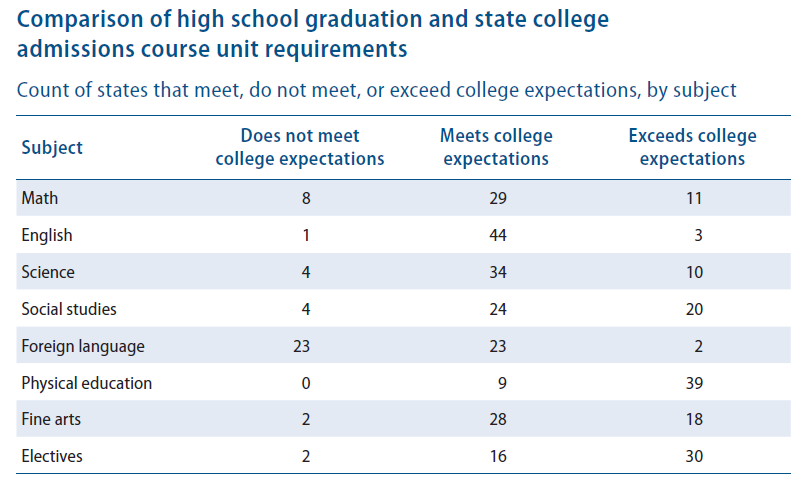You have /5 articles left.
Sign up for a free account or log in.

iStock
Many high school students assume that if they graduate, they must be eligible for college. But that may not be the case.
A report being issued today by the Center for American Progress finds that in many states, state high school graduation requirements are not aligned with the entrance requirements of public higher education. In some cases, they exceed college admissions expectations. But in others, they fall short. The only subject area in which no state requirement fails to meet college admission minimums is physical education.
Here are data from the report:

Why should these data concern educators?
"A high school education should ensure students are eligible for their chosen pathway of what comes next: college and careers, as well as civic life," says the report. "Put simply, high school coursework requirements for a basic, non-advanced high school diploma matter because they create, or stifle, what is possible for students as they progress through and beyond high school."
Many assume that high school counselors can guide students to take the right courses to assure good post-high school options. But the report argues that too many high school students are left to make their own choices because there are not enough counselors in many low-income schools.
"Nationwide, there is one college counselor for every 491 students, but in low-income schools and schools with high percentages of students of color, the ratio can be as high as one counselor for 1,000 students. At this rate, students -- particularly low-income students and students of color -- are far more likely to have insufficient support in helping them navigate the differences between high school graduation requirements and college entrance requirements," the report says.
The report focuses on alignment of standards -- and says that the issue is important for those students who may seek vocational training, not just those looking for traditional college degrees.
Scott Sargrad, managing director of K-12 education policy at the think tank and co-author of the report, said state policy makers also need to look at the substance of courses. "Another important issue is what is actually taught in the courses," he said. And Sargrad said he hoped the alignment the report seeks involves "rigorous courses."
Laura Jimenez, director of standards and accountability at the center, said the lack of focus on the alignment issue is surprising, given issues that policy makers discuss all the time. "We talk a lot about college and career readiness, and we have very different ideas of what that means," she said. "If policy makers are serious, their policies have to align."








